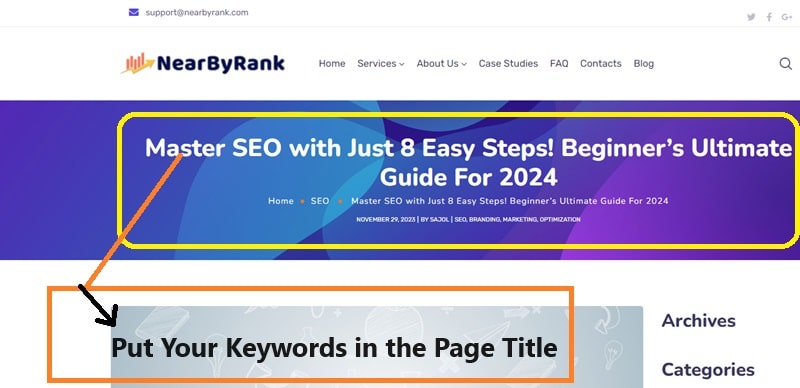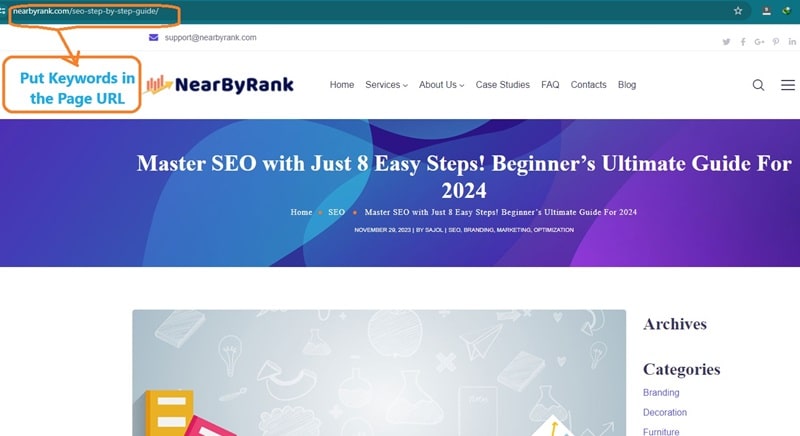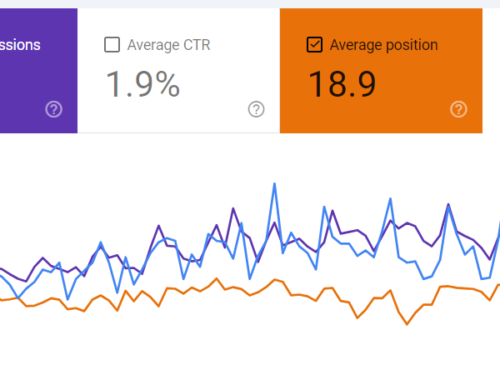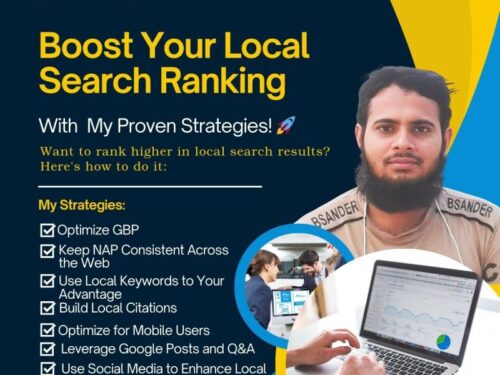Step 1: Find Easy Keywords
The first step in SEO is to identify relevant keywords that your target audience is using to search for information online. These keywords should be specific to your niche and have a good search volume with low competition. You can use keyword research tools like Google Keyword Planner or Semrush to find suitable keywords. You can watch this keyword research tutorial.
Step 2: Put Your Keywords in the Page Title
Your page title is one of the most critical elements for SEO. It should be concise, informative, and include your target keywords. Search engines place significant weight on page titles, so make sure yours accurately reflects the content of your page.

Step 3: Put Keywords in the Page URL
Your page URL should also include your target keywords. This helps search engines understand the topic of your page and improves its relevance to specific search queries. Keep your URLs short, descriptive, and easy to remember.

Step 4: Put Keywords in Your Meta Description
The meta description is a brief snippet of text that appears under your page title in search results. It’s your chance to entice users to click on your page. Include your target keywords naturally in the meta description and highlight the unique value proposition of your content.
Step 5: Put Keywords in Your H1 Text
The H1 heading is the most important heading on your page. It signals to search engines the main topic of your content. Include your target keyword prominently in the H1 heading to improve its relevance for search queries.
Step 6: Use Keywords in the Page’s Content
Throughout the body of your content, naturally incorporate your target keywords. However, avoid keyword stuffing, which can negatively impact your SEO efforts. Use keywords strategically to enhance the readability and relevance of your content.
Step 7: Build Links to Your Website
Backlinks from reputable websites are crucial for SEO. They act as votes of confidence for your website, indicating to search engines that your content is valuable and trustworthy. Focus on building high-quality backlinks through guest blogging, outreach, and social media engagement.
Step 8: Monitor Your Rank
Regularly monitor your website’s ranking for your target keywords using SEO tools like Google Search Console or Ahrefs. Tracking your progress will help you identify areas for improvement and optimize your SEO strategy accordingly.
By following these eight easy steps, you can effectively master SEO and elevate your website’s visibility in search results. Remember, SEO is an ongoing process that requires consistent effort and adaptation.
Stay up-to-date with the latest SEO trends and continue refining your strategies to achieve long-term success.
Khalid Abdullah, SEO Specialist






